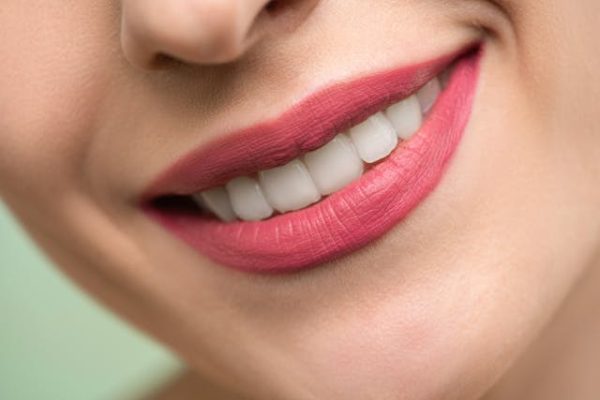Dental health is an essential component of overall well-being, yet many people are misinformed about proper oral care. Misconceptions can lead to poor dental hygiene practices, which can ultimately affect your health. In this article, we will explore and debunk some of the most common dental myths, providing you with accurate information to help you maintain a healthy smile.
Myth 1: Sugar Causes Cavities
The Truth
One of the most pervasive myths is that sugar alone causes cavities. While it is true that sugar plays a significant role in cavity formation, it is not the only factor. Cavities are the result of a complex interaction between bacteria in the mouth and sugars and carbohydrates. When you consume sugary foods or drinks, the bacteria in your mouth feed on these sugars, producing acids that erode tooth enamel.
However, it’s important to note that any carbohydrate can contribute to cavity formation if proper oral hygiene is not maintained. This includes starchy foods like bread, pasta, and chips. The key to preventing cavities is not just limiting sugar intake but also practicing good oral hygiene.
What You Should Do
To protect your teeth from cavities, limit sugary snacks and beverages, and focus on maintaining good oral hygiene. Brush your teeth at least twice a day with fluoride toothpaste and floss daily to remove plaque and food particles that can lead to decay.
Myth 2: You Only Need to See the Dentist When You Have a Problem
The Truth
Many people believe that dental visits are only necessary when they experience pain or discomfort. This myth can lead to serious dental issues going unnoticed until they become more severe. Regular dental check-ups are essential for preventing problems before they arise. Many dental issues, such as cavities and gum disease, can develop without noticeable symptoms.
During routine check-ups, your dentist can identify early signs of decay, gum disease, and other oral health issues. Early intervention can save you from more extensive and costly treatments later on.
What You Should Do
Make it a priority to visit your dentist at least twice a year for routine check-ups and cleanings. This proactive approach can help you maintain optimal oral health and catch potential problems early.
Myth 3: Whitening Toothpaste is Effective for Teeth Whitening

The Truth
Whitening toothpaste is often marketed as a solution for achieving a brighter smile, but the reality is that it has limitations. While these products can help remove surface stains caused by food and beverages, they do not change the natural color of your teeth. The effects of whitening toothpaste are often minimal compared to professional whitening treatments offered by dentists.
Professional whitening treatments use stronger bleaching agents that can penetrate the enamel and effectively lighten the color of your teeth.
What You Should Do
If you are looking for significant whitening results, consider consulting your dentist about professional whitening options. They can recommend the best treatment based on your individual needs and the condition of your teeth.
Myth 4: Brushing Harder Cleans Better
The Truth
Many people believe that brushing harder will lead to cleaner teeth, but this is a misconception that can actually cause harm. Brushing too hard can damage your gums and enamel, leading to sensitivity and other dental issues. The effectiveness of brushing comes from the technique, not the pressure applied.
Using a soft-bristled toothbrush and gentle circular motions is the best way to clean your teeth effectively without causing damage.
What You Should Do
Focus on using the right technique when brushing your teeth. Use a soft-bristled toothbrush and brush gently for at least two minutes, ensuring you cover all surfaces of your teeth.
Myth 5: Dental Work is Only for Aesthetics
The Truth
Another common myth is that dental procedures are only necessary for cosmetic reasons. In reality, many dental treatments are essential for health reasons. For example, fillings, root canals, and crowns are necessary for restoring function and preventing further decay or damage. Ignoring these treatments can lead to more severe health issues, including infections and tooth loss. For those who have lost teeth, dental implants provide a long-term solution that not only restores function but also preserves jawbone health and improves overall oral well-being.
What You Should Do
Understand that dental work can be crucial for maintaining your oral health. Don’t delay necessary treatments due to misconceptions about their importance. If your dentist recommends a procedure, it is likely for your health and well-being, especially given that treatments like dental implants in Nashville and other areas are becoming more accessible.
Myth 6: Mouthwash is a Substitute for Brushing and Flossing
The Truth
While mouthwash can help reduce bacteria and freshen your breath, it is not a replacement for brushing and flossing. These practices physically remove plaque and food particles that mouthwash cannot. Relying solely on mouthwash can lead to inadequate oral hygiene and increase the risk of cavities and gum disease.
What You Should Do
Incorporate mouthwash into your oral hygiene routine as a supplement, but always prioritize brushing and flossing. Use mouthwash after brushing and flossing to enhance your oral care routine.
Myth 7: Children Don’t Need to Worry About Cavities

The Truth
Many parents believe that cavities are a concern only for adults, but this is a dangerous misconception. Cavities can affect children just as much as adults. In fact, early childhood cavities can lead to pain, infection, and issues with permanent teeth. Baby teeth are essential for proper chewing, speech development, and guiding permanent teeth into place.
What You Should Do
Teach children good oral hygiene habits early on, including brushing twice a day and flossing daily. Ensure they visit the dentist regularly, starting by their first birthday or when their first tooth erupts.
Myth 8: Dental X-Rays are Dangerous
The Truth
Some people avoid dental X-rays due to concerns about radiation exposure. However, dental X-rays are safe and necessary for diagnosing dental issues that are not visible during a regular examination. The amount of radiation exposure from dental X-rays is minimal, and the benefits of detecting problems early far outweigh the risks.
What You Should Do
If your dentist recommends X-rays, trust their judgment. They are an essential tool for identifying cavities, bone loss, and other dental issues that require attention.
Myth 9: You Should Brush Your Teeth Immediately After Eating
The Truth
While it’s important to maintain good oral hygiene, brushing your teeth immediately after eating—especially after consuming acidic foods or drinks—can actually harm your enamel. Acidic foods and beverages can soften tooth enamel, and brushing right away can wear it away.
What You Should Do
Instead of brushing immediately after eating, wait at least 30 minutes to allow your saliva to neutralize the acids in your mouth. Rinse your mouth with water after eating to help wash away food particles and acids.
Conclusion
Understanding the truth behind these common dental myths can empower you to take better care of your oral health. By debunking these misconceptions, you can make informed decisions that promote a healthier smile. Remember, regular dental visits and good hygiene practices are key to maintaining optimal dental health. Don’t let myths dictate your oral care; instead, seek accurate information and prioritize your dental well-being. Your smile deserves it!


